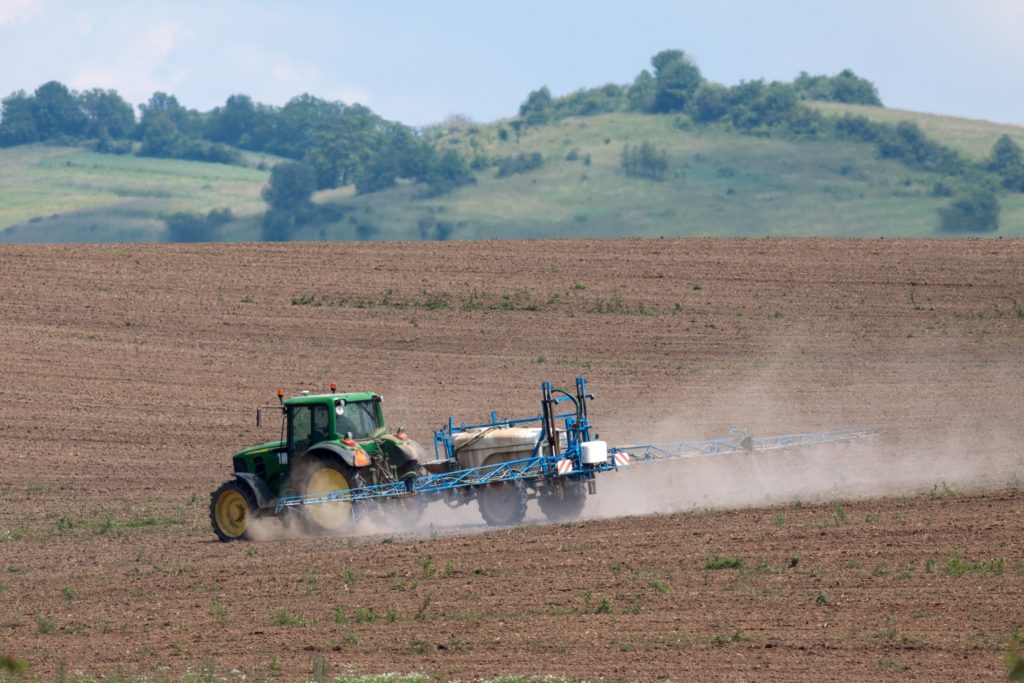
Soil health experts offer tips on fumigation best practices
Fumigation can be a necessary means to get soilborne pathogens under control in potato fields. Chemical fumigants reduce the bad in the soil, but also reduce the good, so other soil health practices are essential following fumigation.
A panel of three industry experts came together for a discussion on the subject during Potato Expo 2021. The panel included longtime AMVAC Technical Sales Rep Ralph Frederick, University of Minnesota Department of Soil, Water and Climate Head Carl Rosen and University of Idaho Department of Plant Sciences Professor Mike Thornton. The panel was hosted by Washington state potato grower Grant Morris.
Let’s start by addressing something of a myth: do fumigants remove all good microbes from the soil?

Mike Thornton: Fumigants do not completely take all of the good microbes out of the soil. Even the most extreme example I can think of, which is something like methyl bromide under a plastic tarp, we know it does not kill all of the beneficial organisms. Different species rebound at different rates, so it is a really complex reaction to fumigation.
Carl Rosen: We can say for sure it does reduce microbial activity, but it doesn’t go to zero. The soil is not sterile. What happens over time is the microbes within that soil tend to rebound toward the end of the season. … It does go down, but it does come back again.
How does fumigation fit into a program that’s using biofumigants? For example, a mustard that we’re chopping and working into the ground.
Rosen: If you have a really severe case of a pathogen, like a verticillium or nematodes, you probably want to use a conventional fumigation to knock those microbes down. Then, you can come back in a year or two with biofumigants to help keep populations down. So, they can work hand-in-hand. At the same time, when you use those biofumigants, you’ll be adding some benefits to your soil with some carbon and other biomass that will help your soil.

Ralph Frederick: When (pathogen) levels are really high, a conventional soil fumigation is probably best for growers to start out with. Then, depending on crop rotations and variety of potato they grow — different varieties can build up different pathogens at different rates — biofumigants can certainly fit into their direct, well-rounded program. A challenge of biofumigants, particularly in the Midwest, is to grow enough biomass to get the benefits that you need.
Thornton: It’s important to keep in mind that not all green manures control all pests. There are differences between mustards and radishes, for example, and even differences in cultivars. One cultivar might be effective on a certain species of nematode, but another cultivar is not.
Do certain biofumigants work better with certain conventional fumigants?
Frederick: They each add different levels of ITC into the soil, so you have to keep that in mind when choosing your product in fitting them into your rotation.
Rosen: There is still research that needs to be done in this area. I would say there are certain biofumigants that work better on verticillium than nematodes, but some of that we’re still trying to work on and figure out. In the meantime, using biofumigants is still beneficial just by adding more carbon to your soil and improving microbial activity.
How do we best fit a fumigation into a soil health program?
Frederick: It gets you to a starting point by bringing down the detrimental pathogens. Also your beneficial (microbes) come down, but you can build those back up over time. I think fumigation is a great first step.
Thornton: Pathogens are one aspect of soil health and fumigants do play a role in reducing pests in the soil, but from a soil health standpoint, fumigants are not a substitute for a good rotation. We still need to use high-residue crops, green manures and use cover crops when we can to build organic matter and carbon in the soil, which help to suppress those diseases.
Rosen: Something that tends to be forgotten is that you’re not only affecting the pathogen population, but you’re improving the root health of your crop. That allows potatoes to explore more soil and utilize nutrients more efficiently (if you have soilborne pathogens affecting your root growth).
How do we best maintain our soil health after fumigation?

Rosen: Mike already talked about using high-residue (rotational) crops and cover crops whenever possible, but another thing is tilling as little as possible not only during your potato year, but your rotation years too. Green manures are great, but also any other type of compost that you have access to.
Frederick: Fumigation is just a tool in the toolbox, it doesn’t replace rotational crops and green manures that put that carbon and organic matter back into the soil. That’s really the way to build up that soil health.
Is there one soil health tip or practice that really jumps out to you in relation to fumigation?
Rosen: You just have to remember that when you fumigate you are bringing down the (microbes) in your soil, so you have to take those steps along the way (that we’ve talked about above) to rebuild those.
Frederick: Every field is different. So, if you’ve potatoes in a field for a long time, you’re going to have a different level of pathogens in that field than if it’s a virgin field or field where you’ve grown very few potatoes before. Fumigation lets you kind of get back to that even point and allows you to build your soil back up with a good rotation and by putting in as much organic matter as possible.
Thornton: To me, fumigation is not the key piece of the soil health discussion. Whether you fumigate or not, it doesn’t change the need for a good rotation, the need to pay attention to your tillage or the need for green manure or cover crops when you can.
If someone is using a lot of biopesticides or amendments and adding healthy microbes into the ground all year long, is there still a need to fumigate?
Frederick: It really depends on where your bad pathogen level is at. Fumigation is an expensive treatment, so people don’t do it haphazardly. If they’re doing it, there is an assumption that there is something wrong with that field. … Even if you’re adding all the healthy microbes, if you reach a certain level (of a pathogen), you may still need to fumigate to bring the detrimental pathogen levels down to a manageable level.
Thornton: We’ve done work with biological fungicides and biofumigants on where they work and maybe where they don’t. In general, the efficacy is not what you would see with a traditional chemical-based fumigant. If you’re in a situation where you have a susceptible variety and a high pest population, they generally don’t do an adequate job. If you have a resistant variety and you’re growing on soil with low populations of pests, then you might want to consider a biological as an alternative. It’s really a case-by-case situation.
Rosen: You definitely want to have your soil tested to make sure it’s at a level that warrants fumigation. Secondly, do adjust by the variety you’re growing.
Is there one or two things you can think of to recommend to growers on fumigation for this season?
Rosen: For this year’s crop, I would assume most growers have fumigated already, so really just follow the best practices for producing that crop. Make sure that you apply appropriate nutrients, for example, and make sure your foliar diseases are controlled so you can get the benefits of those reduced soil pathogens.
Frederick: You’ve set yourself up for a good crop with soil fumigation. Now, you want to make sure you expect your seed and it’s clean. Make sure you don’t have black scurf, or at least limited black scurf, so you’re not bringing rhizoctonia back into the field. You also don’t want to do any deep tillage. You don’t want to pull up untreated soil into your treated soil. Make sure you bring in clean equipment, too.
Thornton: From a general fumigant standpoint, we tend to focus a little too much on the right rate application and forget about all the other factors that determine how well they work. I’d like to see us take more of an approach like they do with nutrients and the four Rs. Rate application and cost is a key, but so is the right time and making sure the soil is the right temperature and the pest is active, the right place in knowing where the pest is your soil. Finally, the right conditions — we talk a lot about soil moisture and till in fumigant application, and if those aren’t there, you can put on a lot of fumigant and not get the efficacy.














